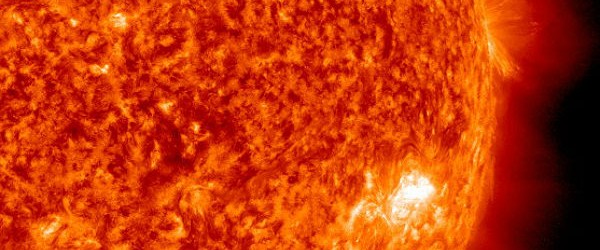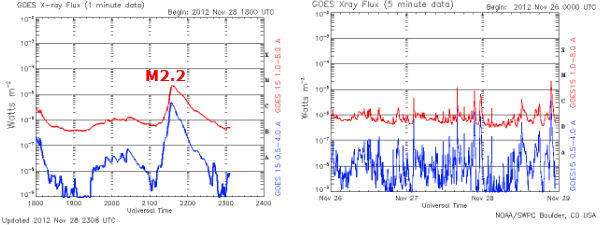Source: The Watchers - 11/29/12, By Chillymanjaro

Sunspot 1620 produced M2.2 solar flare with peak at 21:36 UTC on November 28, 2012. Fast growing sunspot AR1620 has a beta-gamma-delta magnetic field that harbors energy for X-class solar flares. M-class activity is also possible from region AR 1618 which has now rotated off the visible solar disk.
Sunspots 1618 and 1620 have beta-gamma-delta configuration of their photospheric magnetic field and produced two M-class flares in the past 24 hours (M1.6 and M1.0 peaking at 15:57 UTC and 21:26 UTC yesterday). More M-class flares will probably occur in the coming 48 hours in one or both of these active regions. NOAA/SWPC forecasters estimate 35% chance of M-class and 5% chance of X-class solar flares.
Region 1623 also grew significantly in areal coverage but the magnetic complexity is difficult to determine with its proximity to the limb.
A proton event is possible in case of a strong flare in any of these two sunspot groups due to their position in the western solar hemisphere.
The Earth is currently inside a slow (around 380 km/s) solar wind flow with average (around 4 nT) interplanetary magnetic field magnitude.
The arrival of the interplanetary shock driven by the ICME corresponding to the partial halo CME observed on the Sun yesterday is expected on November 30, 2012. As a result we can expect active to minor storm geomagnetic conditions. Isolated unsettled periods are possible through December 1, 2012 due to coronal hole high-speed stream effects.
Follow Sun’s activity in real-time on our Space weather station
Featured image courtesy of NASA/SDO and the AIA, EVE, and HMI science teams.



